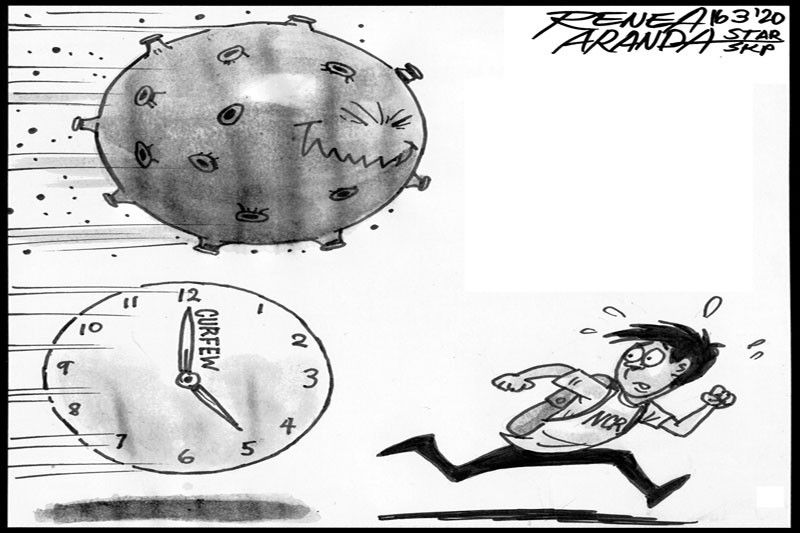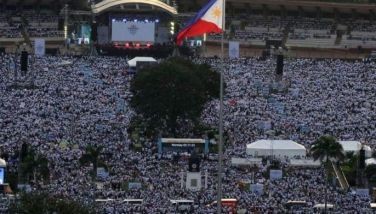EDITORIAL- Next Metro Manila curfew

Social distancing makes sense in the time of the coronavirus disease 2019. The unprecedented community quarantine of Metro Manila aims to promote this as part of efforts to contain the spread of COVID-19.
Enforcing the round-the-clock quarantine in itself would require considerable manpower and resources. Already, police personnel are citing the lack of temperature scanners at checkpoints set up to regulate the entry and exit of both private and mass transport vehicles around the National Capital Region.
Now several Metro Manila mayors want to impose a curfew from 8 p.m. to 5 a.m. to add to the curtailment of movement. Like the community quarantine, however, the curfew will not cover people who work at night, such as employees of pharmacies and business process outsourcing, the few food businesses that will still continue operating, or those delivering supplies of essential commodities. It’s unclear if stalls in wet markets, a number of which operate around the clock, will be covered.
The curfew may cover students and street people, but also many others who make a living in the informal sector who don’t carry work identification cards, among them tricycle drivers and vendors of balut and fried peanuts. Metro Manila is a mega city that does not sleep. Accosting people, asking them what their business is at night, and checking their temperatures would entail additional resources and manpower. Is the government equipped to do this?
Malacañang has said President Duterte is still considering the proposal for a curfew, and could override any city council ordinance under a state of public health emergency. The government is making calibrated responses to the uncertainty posed by the COVID-19 threat. Every measure that curtails people’s mobility, affects livelihoods and dampens economic activity must be carefully thought out. The community quarantine must be given time to work before even more stringent measures are imposed.
- Latest
- Trending



























